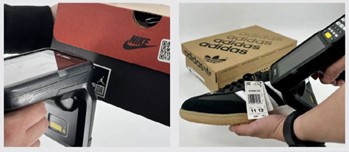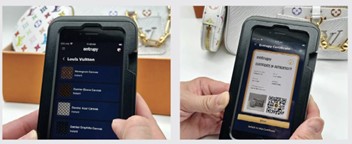



Credit: Stock X
On the occasion of World Anti-Counterfeiting Day (on 6 June), the US-based resale platform StockX released its second annual ‘Brand Protection & Customer Trust Report’, showcasing the company’s significant advances in verification, fraud prevention, and anticounterfeiting measures throughout 2024.
Among the key figures, StockX reported rejecting nearly $10 million worth of counterfeit sneakers last year. The platform blocked close to 250,000 pairs from entering its marketplace, with over 30,000 pairs flagged as suspected fakes. This action alone helped protect consumers from a substantial volume of counterfeit goods.
The report also examined the most commonly counterfeited products. As expected, items that sold well on the platform were frequently the ones most counterfeited.
In the footwear category, two Adidas models made the top of the list: the Campus 00s ‘Core Black’ and the Samba OG ‘Cloud White/Core Black’, followed by the Jordan 1 Retro Low OG SP
Travis Scott ‘Canary’ (Women’s), New Balance 2002R ‘Protection Pack Rain Cloud’, and Maison Mihara Yasuhiro Hank OG Sole Canvas Low ‘Black’.
Classic styles from Ugg and the Crocs Classic Clog ‘Lightning McQueen’ – the best-selling Crocs release in StockX history – also made the list.
In the apparel segment, Fear of God has become the most counterfeited brand, replacing Supreme, which previously held the top spot. Meanwhile, the Labubu dolls from Pop Mart were the most affected collectibles, thanks to their soaring popularity, making Pop Mart StockX’s top-traded collectibles brand (see also page 8).
In accessories, Supreme continues to occupy multiple spots, aligning with past data. The report reveals a shift in counterfeiting focus – previously limited to rare and expensive items, counterfeiters are now targeting general-release, mid-range products in high demand.
StockX credits its success in identifying fake goods to continued investments in technology and process innovation. The platform combines human expertise, market data, machine learning, and advanced tools to verify whether a product meets its standards.
Products flagged as high risk are automatically sent to the platform’s most experienced verifiers. This system resulted in the suspension of thousands of sellers last year and ensured that nearly 15,000 fake items were intercepted before reaching customers.

Since the introduction of this system in 2022, StockX has scanned nearly 10 million RFID tags. Although this scan is not the sole determining factor, it provides critical data in identifying inauthentic products.
The platform now utilises CT scanning for almost all electronics and many high-risk or newly released items. It has already helped identify subtle flaws that would otherwise go unnoticed through visual inspection alone.

This is the Jordan 1 Retro Low OG SP Travis Scott Medium Olive. The middle photo shows an authentic sneaker, and the far right picture shows a suspected counterfeit sneaker. Note the differences in the thickness of the outsole and the drastically smaller air unit in the heel.

In addition to product-level checks, StockX took action to stop bad actors before they could list products. The company reported blocking more than 500,000 ‘bad Asks’ (seller listings) in 2024, a notable decrease from over 800,000 in 2023, thanks to improved seller onboarding processes and new restrictions. StockX also stopped over 90,000 suspicious account creation attempts, preventing potential fraudsters from ever entering the marketplace.
Moving ahead, StockX plans to continue enhancing its verification methods and further safeguard its marketplace against counterfeiting, ensuring the protection of buyers and the integrity of the resale experience.